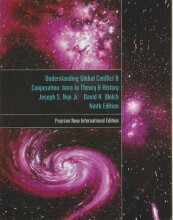Summary: International Law Class Notes
- This + 400k other summaries
- A unique study and practice tool
- Never study anything twice again
- Get the grades you hope for
- 100% sure, 100% understanding
Read the summary and the most important questions on International Law Class notes
-
1 1
This is a preview. There are 3 more flashcards available for chapter 1
Show more cards here -
What is the concept of sovereign authority in international law?
- All states have legal authority
- Sovereign equality: all states are equal
- International law seen as “positive morality”
- Violation of a treaty by A allows B to do the same
- Existence of ICC (International Criminal Court) since 2002 -
What are the functions of the legal system in the context of international law?
- National legal system includes constitution, laws, officials, courts, institutions
- National law is binding, unlike international law
- Ways of law creation: treaties, customary law, codification, International Law Commission
- Law determination involves identifying applicable laws
- Treaties can be adjusted only with unanimous agreement -
2 2
This is a preview. There are 5 more flashcards available for chapter 2
Show more cards here -
What are the key points of the ICJ 1969 North Continental Shelf Case?
- Germany and Denmark submitted the case to the International Court of Justice (ICJ) by special agreement.
- The main question was how to fairly divide the continental shelf among the three countries.
- Denmark and Netherlands argued for equidistance, while Germany argued for equitable principles.
- The ICJ rejected equidistance as the sole method and emphasized equitable principles.
- The Court outlined factors for equitable delimitation including natural prolongation, coastline configuration, special geographic features, economic interests, and proportionality.
- The ICJ instructed the parties to draw the boundaries based on these principles. -
How did the International Court of Justice (ICJ) handle the boundaries in the ICJ 1969 North Continental Shelf Case?
- The ICJ did not draw the boundaries itself.
- The court instructed the parties to draw the boundaries based on the principles of equitable delimitation.
- Factors to consider included natural prolongation of land territory underwater, coastline configuration, special geographic features, economic interests, and proportionality. -
3 3
This is a preview. There are 2 more flashcards available for chapter 3
Show more cards here -
What are some key points regarding state sovereignty and international law?
- State sovereignty develops over time.
- Sovereignty is no longer a shield to disregard obligations.
- Being a state comes with rights, obligations, and responsibilities.
- International law validity based on consent of states and linked to sovereignty.
- Soft law serves various purposes and forms. -
What are some purposes and forms of soft law in international law?
- Alternative to treaty law.
- Authoritative interpretation of treaties.
- Guidance for treaty implementation.
- Development of international legal principles.
- Evidence of opinio juris in customary law formation. -
How are the ICJ, the Sustainable Development Goals (SDGs), and the Paris Agreement related to international law?
- ICJ: International Court of Justice.
- SDGs and Paris Agreement examples of global law.
- SDGs and Paris Agreement considered soft law.
- SDGs in soft law format.
- Paris Agreement as a treaty. -
What impact did the ICJ ruling have on Germany, Denmark, and Netherlands?
- Established guidelines for equitable delimitation of continental shelves.
- Influenced separate agreements reached by Germany, Denmark, and Netherlands.
- Agreements based on ICJ's guidance. -
5 Ch 2
This is a preview. There are 4 more flashcards available for chapter 5
Show more cards here -
How is international law predominantly made, and is there a specific document specifying this process? What is the role of the Lotus case in creating customary international law?
- International law is predominantly made by states.
- There is no specific document specifying how it is made.
- The Lotus case gave an important dictum on creating customary international law. -
What significant change occurred from the Permanent Court of International Justice (PCIJ) to the International Court of Justice (ICJ)? What aspects does the ICJ consider in deciding customs, conventions, and principles of law civilized by Article 59?
- The PCIJ became the ICJ.
- The ICJ decides customs, conventions, and principles of law civilized by Article 59, such as general principles of law, good faith, no crime without law, and impartiality.
- Higher grades + faster learning
- Never study anything twice
- 100% sure, 100% understanding
































